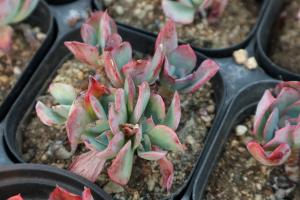What Are Plants Called That Attach to Trees
Plants that attach to trees are referred to as epiphytes. They are also commonly known as air plants, as they do not have roots that grow in soil. Instead, they use their roots to cling onto other plants or objects, such as trees or rocks, and absorb moisture and nutrients from the air and rainwater.
The Role of Epiphytes in Ecosystems
Epiphytes play an important role in ecosystems, particularly in tropical rainforests, where they can be found in abundance. They provide habitats for many species of animals, including insects, birds, and small mammals. They also contribute to the nutrient cycling process, as they absorb nutrients from the rainwater and atmospheric dust and release them back into the ecosystem when they decompose.
Examples of Epiphytes
Epiphytes come in many different forms, from small mosses and ferns to large, flowering orchids. Some of the most common examples include bromeliads, which are a type of tropical flower that grows on trees and rocks, and staghorn ferns, which have large, antler-shaped leaves and can grow up to several feet in length. Other examples of epiphytes include Spanish moss, which is a type of air plant that grows in hanging strands, and the vanilla orchid, which is used to make vanilla flavoring.
Epiphytes in Horticulture
Epiphytes are also popular in horticulture, as they do not require soil and can add a unique touch to indoor or outdoor gardens. Many species of epiphytes are easy to care for and can be grown in pots or mounted on pieces of wood or cork. Commonly grown epiphytes in horticulture include the air plant, which is a small, low-maintenance plant that grows without soil, and the string of pearls, which is a trailing plant that can be grown in a hanging basket or trained up a trellis.
The Future of Epiphytes
Despite their ecological and horticultural value, many species of epiphytes are under threat due to habitat destruction, climate change, and collection for the horticultural trade. Efforts are currently underway to conserve and protect these plants, including the establishment of protected areas and the implementation of sustainable cultivation and harvesting practices. By protecting epiphytes and their habitats, we can ensure that these important plants continue to play their crucial role in ecosystems around the world.

 how many times do yo...
how many times do yo... how many planted tre...
how many planted tre... how many pine trees ...
how many pine trees ... how many pecan trees...
how many pecan trees... how many plants comp...
how many plants comp... how many plants can ...
how many plants can ... how many plants and ...
how many plants and ... how many pepper plan...
how many pepper plan...





























